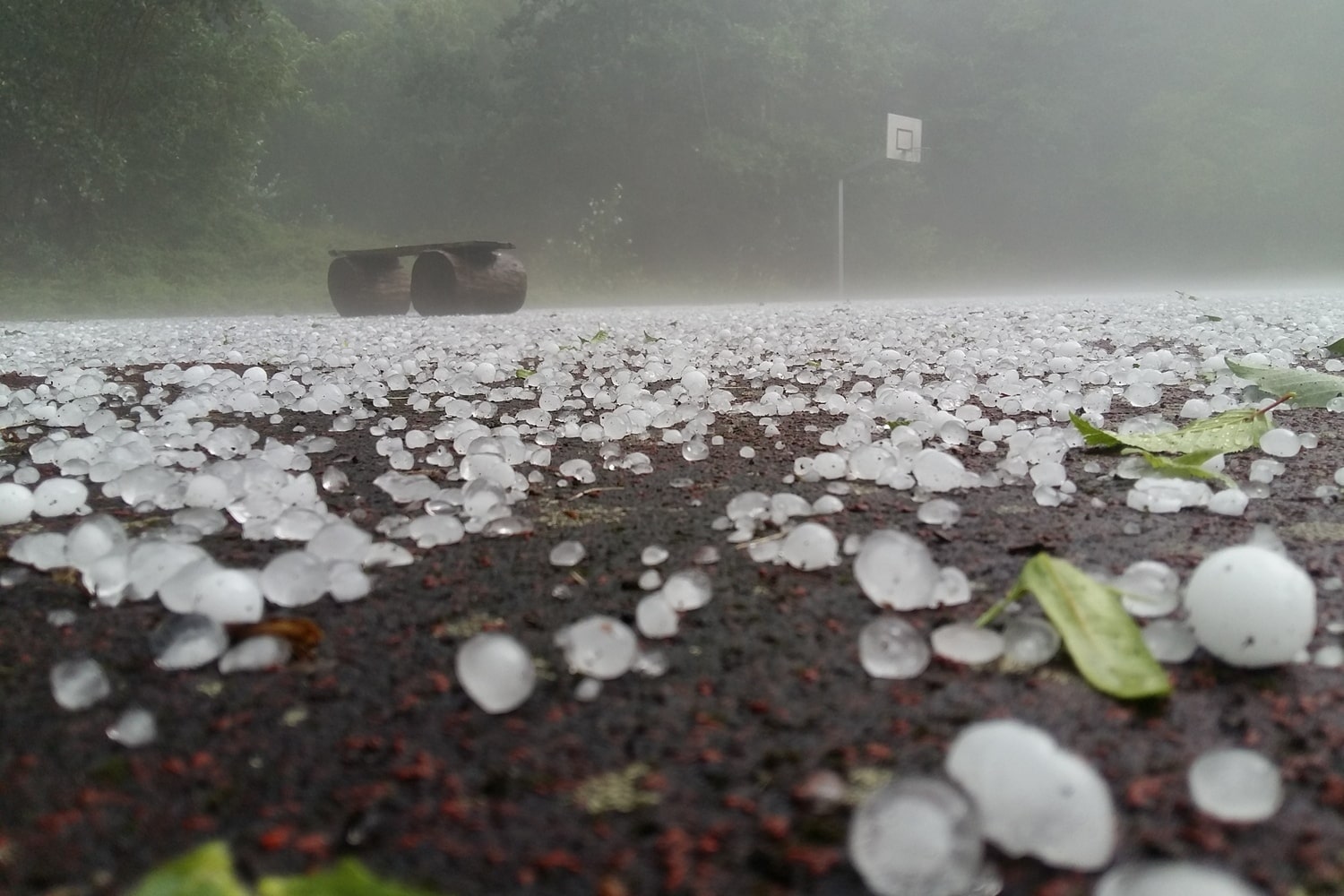Hailstorms are among the most unpredictable and destructive weather phenomena. They can cause immense material damage, destroying crops, damaging vehicles, rooftops, and sometimes even posing a threat to human life. Although many people have encountered hail, few truly understand its structure, formation mechanisms, or the scale of its impact. This natural occurrence has fascinated scientists for centuries, and thanks to modern technology, it is now studied in greater depth. Here are some fascinating and interesting facts about hailstorms that you might not have known.
- Hail forms inside thunderstorm clouds where strong updrafts lift water droplets to high altitudes where they freeze. The frozen particles move up and down within the cloud, gaining additional layers of ice with each cycle. When they become too heavy for the updrafts to support, they fall to the ground as hail.
- The largest recorded hailstone fell in Bangladesh in 1986 and weighed nearly one kilogram. Dozens of people lost their lives during this event, proving that hail can be not only destructive but also deadly. This case is recognized as the deadliest hailstorm in history.
- In Poland, hail is most common during summer months, particularly in June and July. The southern and central regions are most vulnerable due to the frequent thunderstorms with high humidity levels. Occasionally, hail also occurs in late spring or early autumn.
- In the United States, there is a region called “Hail Alley” that includes Texas, Oklahoma, Kansas, and Nebraska. This area experiences the highest frequency and severity of hailstorms in the country. Insurance coverage for hail damage is especially common in these regions.
- Hail often accompanies strong winds, heavy rainfall, and sometimes even tornadoes. When multiple severe weather events happen simultaneously, the resulting damage can be catastrophic. For this reason, weather forecasts with hail warnings are taken very seriously.
- Hailstones can range in diameter from a few millimeters to several centimeters. Any hailstone larger than 2 centimeters is considered dangerous for people and property. In extreme cases, hail can puncture roofs, shatter car windows, and break tree branches.
- To protect crops from hail, modern techniques such as cloud seeding with silver iodide are used. This process is intended to turn potential hail into rain. It is primarily used in agriculture and areas at high risk of hail.
- In the 19th century, Swiss farmers attempted to fight hail by firing cannons at storm clouds. Although this method proved ineffective, it represents one of the first efforts to combat weather phenomena. Today, it is regarded as a historical curiosity.
- Cars are the most frequently damaged property during hailstorms, especially when left in open spaces. In some cities, special shelters are built or mobile covers are used to protect vehicles. Insurers offer special hail damage coverage in particularly vulnerable regions.
- In some traditional beliefs, hail was seen as a sign of divine anger. To protect themselves, people would recite prayers, ring church bells, and sprinkle fields with holy water. Though scientifically unsupported, such practices were once widespread in rural areas.
- Hailstones have a layered structure similar to that of an onion. When cut in half, one can see how many times the hailstone circulated within the cloud before falling. This property helps scientists analyze atmospheric processes.
- Modern weather radars can detect hail formation in its early stages. This makes it possible to warn residents in threatened areas in advance. However, accurately predicting the exact location of a hailstorm remains challenging.
- In some countries, drones are used to disperse hail-forming clouds. They allow precise delivery of chemical agents to specific areas in the sky. This method is safer and more effective than traditional ground-based techniques.
- After intense hailstorms, localized flooding can occur as drainage systems struggle to cope with rapidly melting ice. This often results in traffic disruptions and waterlogged streets. The problem becomes worse when hail is accompanied by heavy rain.
These amazing and eye-opening facts reveal that hail is more than just an atmospheric curiosity; it is a serious natural hazard. Modern technology allows us to better understand and mitigate its effects. No matter where you live, hail remains a subject of scientific research and public safety concern. Understanding its nature helps us prepare for its potential threats.





